I have no idea why Capt. Danny Wray decided to wait for us at the Bridgeside Marina in lonely Grand Isle, La., that chilly December morning. I just know that he did, and I’m thankful for that.
“You ought to be here by seven,” he said to me over the phone the evening before. I was bellied up to the bar with a pair of drinking buddies at Pat O’Brien’s in the heart of the French Quarter, and there’s a chance, given the two empty Hurricane glasses resting in front of me (you know, you really can’t taste the alcohol), I was overly optimistic when I said, “No problem. We’ll be there.”
I’m not sure what it says about my friends when, after hearing exactly when we would have to leave New Orleans in the morning in order to get to Grand Isle by 7 a.m. (4:30 a.m.— it's a two-and-a-half-hour drive) they both echoed my words to Capt. Danny.
“No problem.”
So, when the three of us finally made our way south to Grand Isle and lurched into the marina parking lot at 9:30 a.m., I half expected Capt. Danny to tell us to take a hike. Late for a plane? Fine. Late to work? Easily explained. Two and a half hours late for a fishing trip? Get a rope.

But when the gregarious fishing guide who’s carved out a niche among southeast Louisiana anglers by taking clients into the southernmost reaches of the vast Barataria Estuary via kayak greeted us, it was with a firm handshake and a big, toothy south Louisiana grin. Perhaps, after what turned out to be a comedy of early morning errors ranging from frantic phone calls and some basic navigational challenges (“Are we going south? It feels south”), we might get some redfish angling in after all.
“Welcome to the end of the friggin’ world,” Danny said as we stumbled out of the tiny rental car. Then he turned and pointed due south (“Ah, that’s south...”) over the gray, white-capped waters of the Gulf of Mexico as it sprawled out to the horizon. “Ain’t nothin’ between you and Cancun except for 800 miles of open water.”
We smiled with relief—a three-hour drive that included a wrong turn that steered us through the sugar cane plantations of southeast Louisiana and a blessed stop at a convenience store for directions and an oversized bottle of ibuprofen landed us on this tiny spit of sand and shell. Here, where the waters of the gulf occasionally fire deadly named storms north where they rip and tear at the land and its people, we would, indeed, go fishing.
That our guide still had patience to smile was enough to brighten our moods, even given our present state, self-inflicted though it might be.
Capt. Danny gave us a knowing smile and managed to find some sympathy with which to lace it. A perfect storm of mishaps had deposited our sad-looking crew at his feet, so it was with no small amount of compassion that he led us to the marsh and the redfish that swim there.
I stood on the surprisingly firm bank of the estuary, eyeing the kayak skeptically. I’m a marginal boater at best, much more at home in the dump-proof confines of my little one-man pontoon craft than I am in a boat that’s barely wider than my rear end and not much taller than me.
“You’ll be fine,” Danny said. “It’s easier than it looks.”
Turns out, he’s right. The open-topped crafts are surprisingly easy to maneuver, even for a novice like me, who’s last trip in a long, skinny craft ended with me and my fishing buddy Brett Prettyman going sideways in a canoe over a waterfall in Virginia’s New River. Keeping in mind that even the southernmost reaches of Louisiana can get downright cold in December, getting wet was not something I wanted to do. But Danny’s specialized fishing kayak was an easy craft to propel with the dual-bladed oar and just the right rhythm. It also helped, at least psychologically, to know the marsh, this close to the salty waters of the gulf, is only a couple feet deep in most places. And, according to Capt. Danny, the water is too salty for gators and too cold in December for snakes.
But redfish, it seems, find the quiet waters of the marsh downright homey.
The four of us, with Danny in the lead, paddled across a wide channel to a firm piece of dry land less than a mile from where we parked the car. After a couple of testy moments getting out of the wobbly kayaks (which, again, was easier than I expected), Danny had the three of us blind casting in a skinny slice of dark water. Equipped with a sturdy 7-weight rod and using one of Danny’s spoon flies (a flattened piece of Mylar tubing shaped like a spinner blade and hardened with epoxy), Kendall VanDyk, a good friend of mine and a former Montana state senator from Billings, was the first to hook up. A short fight ended with Kendall proudly displaying a lean two-pound redfish.
We fished the little channel for a good hour, and the action was pretty consistent, given the cold air—high 40s—and the cold water slowly leaving the marsh with an outgoing tide.
Fly fishing for reds can be done in a number of ways. The most popular—and, arguably, the most fun—is by sight-fishing for the big drum as they “tail” in shallow water. When reds are active, they’ll prowl the shallows of the marsh and root through the briny mud in search of crabs, shrimp and small fish. Often, the water they swim through is only a few inches deep.
A couple of years earlier, I witnessed tailing reds farther north in the Barataria near Myrtle Grove, La., and it was a sight I’ll never forget. That trip, conducted from full-fledged flats boats, was a spring adventure into a maze of brackish channels teeming with reds and alligators, as well as the invasive nutria, a South American rodent transplanted years ago to provide food, fur and sport to Louisiana’s southernmost reaches. The critter has become a major pest in the marsh, where it thrives on the shoots of young plants and contributes greatly to an ever-growing erosion problem in the region.
Food and fur? It’s failed to provide much of either, although, for a while there, it did appear on a few menus in the Big Easy. Not surprisingly, it didn’t catch on.
Back to the fishing. When the reds aren’t tailing, and they’re a bit less active thanks to cooler water and cooler weather in general, casting flies over bathtub-sized holes in the marsh can be deadly. For VanDyk, the method proved very effective.
Using a spoon fly sporting a rainbow pattern that captured the bright light from the December sun and reflected it like a beacon through the dark water of the marsh, VanDyk had an excellent day on the marsh, and he caught one redfish that might have pushed five pounds—a big red for December in this particular stretch of the Barataria, Danny said.
Our other fishing partner, J.R. Reger, also of Billings, took Danny’s advice and discreetly snagged a live minnow to the hook of his spoon fly. In moments, he hooked up, as well.
“They ain’t the smartest fish in the world,” Capt. Danny said. “For some reason, they just can’t resist a live minnow.”
Reds are strong, brutish fish—they fight a lot like a big carp might fight when hooked on a fly rod, but the glamour shot at the end of the transaction is a bit more rewarding. And, even at two pounds, they can put a good bend in a 7-weight rod.
I refused the help of minnows and began to experiment with some flies from my “big fish” fly box. Settling on a bright yellow streamer tied originally for the northern pike that swim in the lakes of upper Saskatchewan, I cast into a deep hole adjacent to a little tuft of marsh grass, one of thousands that pass for islands in this vast wilderness sea of salt and mud. Moments later, my biggest redfish of the day nailed the big fly and took me for a nice ride before coming to hand.
We spent the better part of the day kayaking from one location to the other, and then walking gingerly over oyster beds and through the winter-brown reeds on boggy islands in search of redfish. We found them nearly everywhere we stopped to fish.
South Louisiana is a magical place. Its people are some of the most genuine I’ve ever encountered—Danny certainly falls into that category. The land itself is wondrous—within an hour’s drive of New Orleans, the avid fly fisher can be paddling through cypress swamps in search of big bass, or kayaking through the flat seascape of the Barataria casting to redfish or, at certain times of the year, speckled trout and black drum. A little more driving can put the really serious fly angler on a chartered boat, where the Gulf of Mexico becomes a playground, and the targets switch from reds and trout to tarpon pulled from beneath offshore oil-drilling platforms and other blue-water game that will test the best reels and the strongest backs of the fly fishing fraternity.
In fall, and throughout the winter, the region is a waterfowl hunter’s paradise—ducks and geese converge on the estuary for the winter, offering some of the best wing shooting found in the country.
But, it’s not without its challenges. The Barataria Estuary, long a natural barrier against hurricanes and other big weather events, is literally wasting away thanks to a series of levees and dams that keep the region’s rivers from depositing silt and sediment in the marsh and “building” new land. And that says nothing about the always-looming threat of disaster from the hundreds of nearshore oil rigs — we were reminded of this threat when the Deepwater Horizon exploded not too far from Grand Isle in 2010.
The fishing, though, remains stellar, although Grand Isle was hit pretty hard by the disaster, it’s recovered nicely a decade later.
For a trio of inexcusably late anglers who managed to work through that self-inflicted perfect storm of events and find their way to Grand Isle on a chilly December day, the marsh delivered. It will again, one day soon.
“This is a special place,” Capt. Danny told me as he worked his way through a plate of fries and a tasty oyster po’boy after our day on the water. “It gets beat up now and then, but the fish don’t seem to mind. So I don’t mind sticking around. Beats working.”




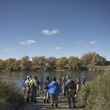






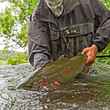
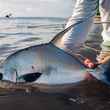



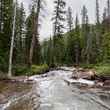





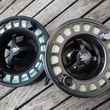



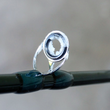
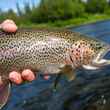




Comments